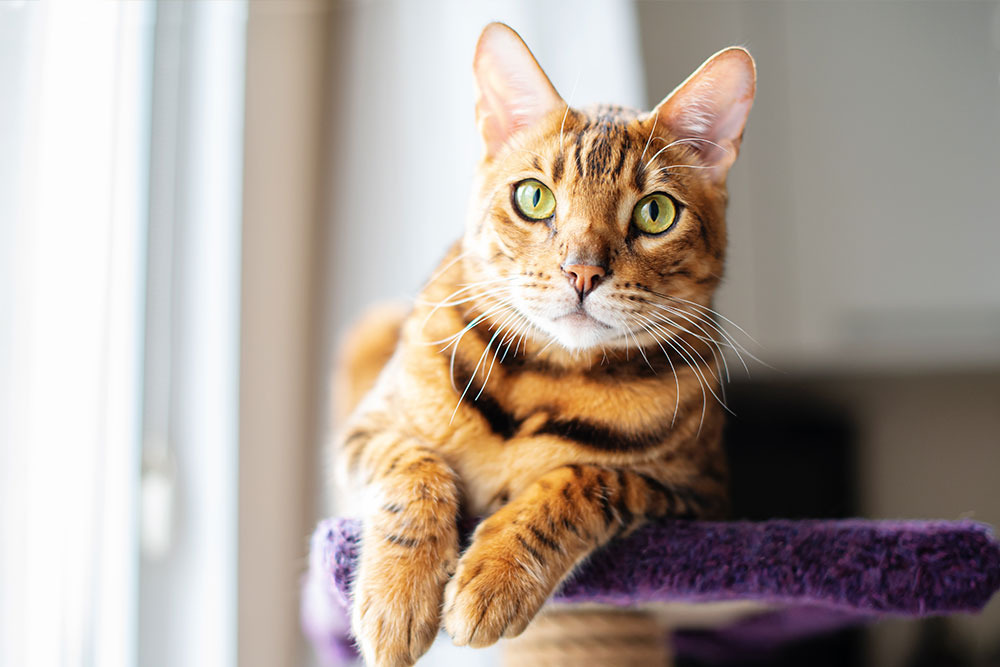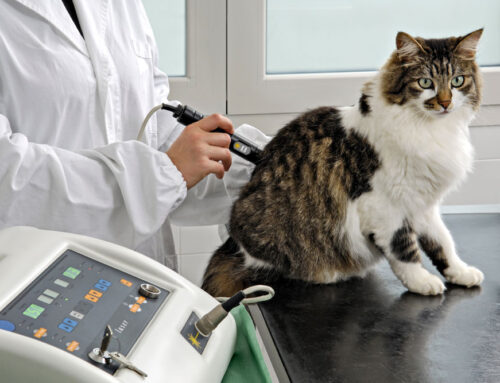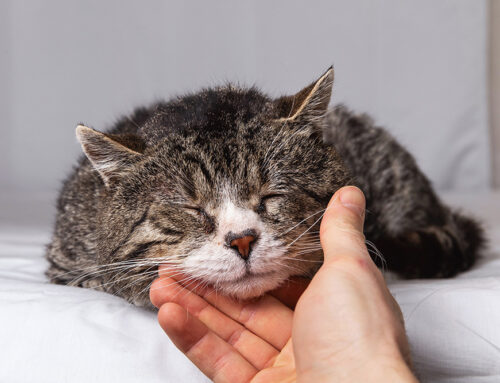Caring for Pets with Osteoarthritis: A Comprehensive Guide
As pet owners, we’re bound to encounter moments when our beloved pets begin showing signs of aging. One of the more common issues we may face is osteoarthritis (OA). Many of us wonder if those subtle signs, like a limp or a refusal to climb stairs, could mean something more serious. Here at Woodland Springs Veterinary Hospital in Fort Worth, Texas, we want to help you understand osteoarthritis so you can support your pet in living a comfortable and fulfilling life.
What is Osteoarthritis in Pets?
Osteoarthritis is a degenerative joint disease characterized by the breakdown of cartilage, which is the protective tissue at the end of bones. This breakdown leads to inflammation, pain, and reduced joint mobility. While OA is often associated with older pets, it’s important to note that it can affect pets of any age, even those who seem otherwise healthy. Unlike normal aging, osteoarthritis involves more complex changes in joint function and requires medical intervention to manage effectively. The Arthritis and Degenerative Joint Disease in Cats – iCatCare provides further insight into how this condition particularly affects our cats.
Common Causes of Osteoarthritis
Several factors may contribute to the development of osteoarthritis in pets:
- Genetic predispositions: Conditions like hip or elbow dysplasia can make certain breeds more susceptible.
- Joint injuries: Fractures or ligament tears, often from accidents or overexertion, can lead to OA.
- Obesity: Excess weight places additional stress on joints, accelerating cartilage breakdown.
- Repetitive stress: High-impact activities can wear down the cartilage over time.
- Age-related wear: Although not solely responsible, aging naturally increases the risk of joint wear.
Why Early Detection Matters
Osteoarthritis is a progressive disease and can severely impact your pet’s quality of life. Early detection allows for proactive management, potentially slowing its progression and minimizing pain. Without treatment, the condition can lead to chronic pain, reduced mobility, and even behavioral changes, such as irritability or withdrawal. By addressing OA early, you strengthen the bond with your pet through improved care and comfort.
Recognizing the Signs of Osteoarthritis
Symptoms of osteoarthritis can be quite varied. Here’s what to watch for:
- Changes in movement: Limping or stiffness, difficulty rising, slower pace on walks, reluctance to jump, and a “bunny hopping” gait, particularly in cats, can be key indicators. For more on limping, see Why is my dog limping? – AKC.
- Behavioral changes: Signs include irritability, hiding, changes in sleep patterns, increased vocalization, and less grooming in cats.
- Physical signs: You might notice joint swelling, muscle atrophy, or visible discomfort when joints are touched. Addressing these signs early can prevent the more severe consequences of untreated osteoarthritis, such as persistent pain and further mobility loss. For a comprehensive list of pain signs, visit What’s Wrong? Common Pet Pain Signs.
How Osteoarthritis Progresses
Left unaddressed, osteoarthritis progresses in several stages:
- Early stages: Your pet may experience occasional stiffness and pain.
- Mid stages: Symptoms become more frequent and persistent.
- Late stages: Mobility severely decreases, leading to significant quality of life impact. The cycle of pain, decreased activity, and muscle loss further complicates the pet’s condition, often leading to compensatory stress on other limbs.
Diagnosing Osteoarthritis
When you bring your pet to us, we will perform a thorough physical examination. This includes:
- Gait assessment
- Joint palpation
- Neurological evaluation Diagnostic imaging, such as X-rays or advanced modalities like CT or MRI, can be vital tools to confirm OA. In some instances, we may analyze joint fluid or conduct blood tests to rule out other potential conditions. Knowing your pet’s history and symptoms will assist us greatly in making an accurate diagnosis. Learn more about the importance of preventive testing with Preventive Testing for Senior Pets – Zoetis Petcare.
Treatment Options: A Multi-Modal Approach
Managing osteoarthritis often requires a combination of treatments:
- Medication: Non-steroidal anti-inflammatory drugs (NSAIDs) are commonly used to manage pain. Other medications, like tramadol or gabapentin, may also be considered.
- Joint supplements: Glucosamine, chondroitin, and omega-3 fatty acids can support joint health.
- Weight management: Maintaining a healthy weight is crucial to reducing joint strain.
- Physical therapy: Exercises tailored to your pet’s abilities, hydrotherapy, acupuncture, and massage therapy can be very effective. Understand more with Laser Therapy for Pain and Arthritis in Dogs – AKC.
- Lifestyle modifications: Simple changes, such as using ramps, providing soft bedding, and elevating food bowls, can greatly improve your pet’s comfort and accessibility.
Consequences of Untreated Osteoarthritis

Neglecting osteoarthritis can lead to:
- Chronic and debilitating pain
- Significant loss of mobility and muscle strength
- Behavioral changes, including aggression due to pain
- An overall decline in quality of life and potential secondary health issues
Osteoarthritis and Daily Life
Living with a pet with OA can be challenging. It often requires:
- Routines: Adapting to new routines that accommodate your pet’s needs
- Emotional impact: Dealing with the emotional burden of managing a pet in pain
- Financial considerations: Managing the financial aspects of ongoing treatment
- Household adjustments: Creating a pet-friendly environment through modifications like non-slip rugs and accessible rest areas
Prevention and At-Home Support
Though osteoarthritis may not be entirely preventable, here are ways to lessen its impact:
- Keep your pet at a healthy weight
- Ensure appropriate levels of exercise
- Use joint supplements proactively
- Treat joint injuries promptly At home, providing a comfortable environment with soft bedding, ramps, and ample rest opportunities can offer relief. For exercise ideas, refer to Exercises for Dogs with Osteoarthritis – Zoetis Petcare.
Preparing for Your Vet Visit
A successful veterinary visit starts with preparation. Consider bringing these items:
- A detailed list of symptoms and changes you’ve observed
- Video recordings showcasing your pet’s gait and behavior
- A list of current medications and supplements
- Items like food bowls or assistive devices Questions to ask your vet include:
- What stage of OA is my pet experiencing? – What are the side effects of the recommended treatments? – How can we adapt our home to better suit our pet’s needs?
FAQs: Addressing Common Concerns
- Is osteoarthritis a death sentence for my pet? No, with proper treatment and management, your pet can lead a comfortable life.
- Can my pet still enjoy life with osteoarthritis? Absolutely, with pain management and lifestyle adjustments, many pets continue to enjoy daily activities.
- Are joint supplements effective? Quality joint supplements can benefit many pets, but it’s important to choose them carefully.
Here to Help
At Woodland Springs Veterinary Hospital, we understand how concerning osteoarthritis can be. Our compassionate team is dedicated to helping your pet live their best life. If you have any questions or are ready to schedule an exam, please contact us or meet our team. Understanding osteoarthritis is the first step in managing it effectively. Together, we can ensure your pet receives the care they deserve.







Leave A Comment